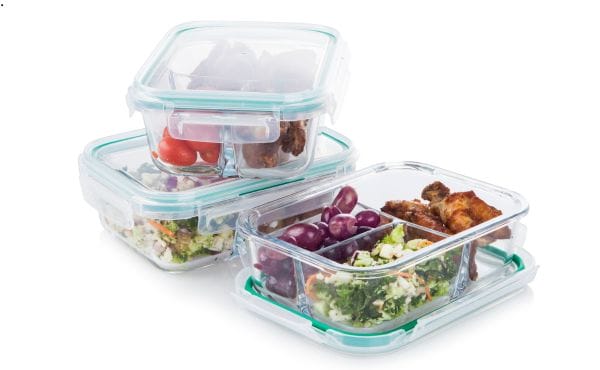Plastic food storage containers play a vital role in maintaining food freshness and organization. Selecting the optimal size ensures kitchen efficiency and convenience. However, achieving this balance involves navigating tradeoffs and challenges, such as maximizing storage space while minimizing environmental impact.
Plastic Food Storage Container Size Chart
| Size (in liters) | Dimensions (in inches) | Ideal Use |
|---|---|---|
| 0.5 | 6 x 4 x 3 | Small snacks or sauces |
| 1 | 6 x 4 x 6 | Leftovers or small portions |
| 2 | 8 x 6 x 6 | Small fruits or vegetables |
| 5 | 10 x 8 x 8 | Larger portions or batch cooking |
| 10 | 12 x 10 x 10 | Family-sized meals or large batches |
| 20 | 16 x 12 x 12 | Bulk storage or large items |
Why Size Matters
Choosing the right container size not only prevents food wastage but also maximizes storage efficiency. By selecting containers that fit your needs, you can optimize space utilization and keep food fresh longer. However, this decision involves tradeoffs, such as balancing storage capacity with the need for compact storage solutions.
Challenges may include finding containers that stack well or fit neatly in your fridge or pantry shelves. It’s crucial to consider these factors to minimize environmental impact and ensure practicality when selecting from the Plastic Food Storage Containers Size Chart.

Factors to Consider When Choosing Container Sizes
When choosing container sizes, understanding the distinction between volume (liters or quarts) and dimensions (length, width, height) guides selection based on storage requirements. Stackable designs enhance pantry or refrigerator space efficiency, promoting better organization. Balancing these factors involves tradeoffs, such as sacrificing volume for compact stacking or opting for larger containers that may require more space.
Challenges include finding containers that fit specific shelves or maximizing use of limited storage areas. Considering these aspects is crucial for optimizing both practicality and environmental impact when navigating the Plastic Food Storage Containers Size Chart.
Common Sizes of Plastic Food Storage Containers
Small containers are ideal for storing individual portions or condiments, typically ranging from 0.5 to 1 liter in volume, perfect for snacks or small leftovers. Medium-sized containers, ranging from 1 to 3 liters, are versatile for storing larger leftovers or meal prepping, accommodating various foods like soups, salads, or pasta dishes.
Large containers, holding 3 liters or more, are suitable for bulk storage and organizing pantry staples such as rice, flour, or cereal. Balancing these sizes involves tradeoffs, like choosing between compact storage and sufficient capacity, while challenges include finding containers that fit specific storage spaces or organizing efficiently.
Considering these aspects ensures optimal use of the Plastic Food Storage Containers Size Chart, promoting both practicality and sustainability.
Specialized Containers for Specific Foods
Some containers are designed specifically for certain foods like produce or liquids, such as lettuce keepers or containers with compartments for salads. These specialized designs cater to specific storage needs, enhancing freshness and organization. However, choosing specialized containers involves tradeoffs, such as dedicating storage space for specific foods versus using multipurpose containers.
Challenges include finding containers that accommodate different food types or fit neatly in refrigerator shelves. It’s essential to weigh these factors when selecting from the Plastic Food Storage Containers Size Chart to optimize food storage efficiency while minimizing waste and environmental impact.
Tips for Maximizing Use of Plastic Food Storage Containers
To maximize the use of plastic food storage containers, proper care and maintenance are crucial. Ensure food safety and prolong container lifespan by regularly cleaning, storing, and maintaining them. Labeling containers and organizing storage effectively facilitate easy access to stored foods. However, these practices require tradeoffs, such as investing time in labeling versus the convenience of quickly accessing unlabeled containers.
Challenges include maintaining labels over time and ensuring containers fit within designated storage spaces. Considering these factors enhances practicality when utilizing the Plastic Food Storage Containers Size Chart, promoting both efficiency and sustainability.
Conclusion
In conclusion, selecting plastic food storage containers that match your specific storage needs is essential. Balancing size and functionality involves tradeoffs, like optimizing space versus accommodating diverse food types. Challenges include finding containers that fit seamlessly into your kitchen setup. Consider these factors to make informed choices from the Plastic Food Storage Containers Size Chart.
FAQs
Q1: What size plastic food storage container should I use for meal prepping?
A: For meal prepping, consider medium-sized containers (1 to 3 liters) that can accommodate meals like soups, salads, or pasta dishes, ensuring they fit your fridge or pantry shelves.
Q2: How do I choose between stackable containers and non-stackable ones?
A: Stackable containers save space but may have slightly less capacity than non-stackable ones. Consider your storage space and organizational needs when deciding.
Q3: Are there containers specifically designed for keeping produce fresh?
A: Yes, specialized containers like lettuce keepers or those with compartments for salads are designed to maintain freshness longer by controlling moisture levels.
Q4: What are the best practices for cleaning and maintaining plastic food storage containers?
A: Clean containers regularly with mild soap and water, avoid using abrasive cleaners, and ensure they are completely dry before storing to prevent odors and staining.
Q5: How can I effectively label and organize my plastic food storage containers?
A: Use waterproof labels and permanent markers to label containers clearly. Organize them by food type or use, ensuring easy access and minimizing confusion.